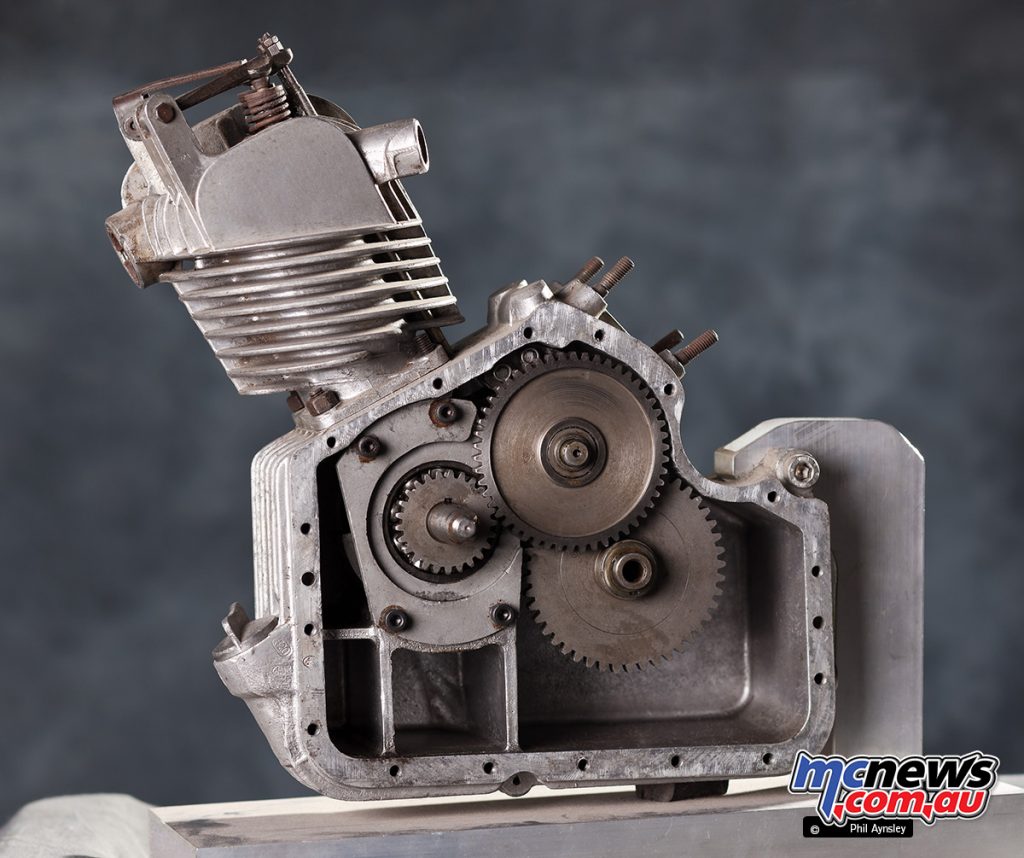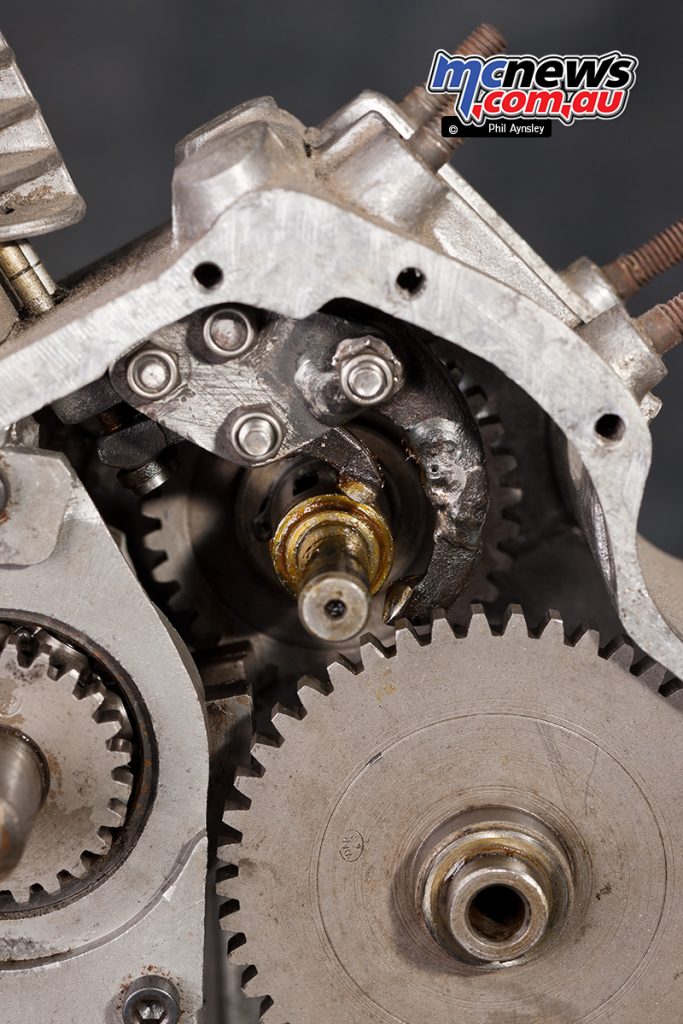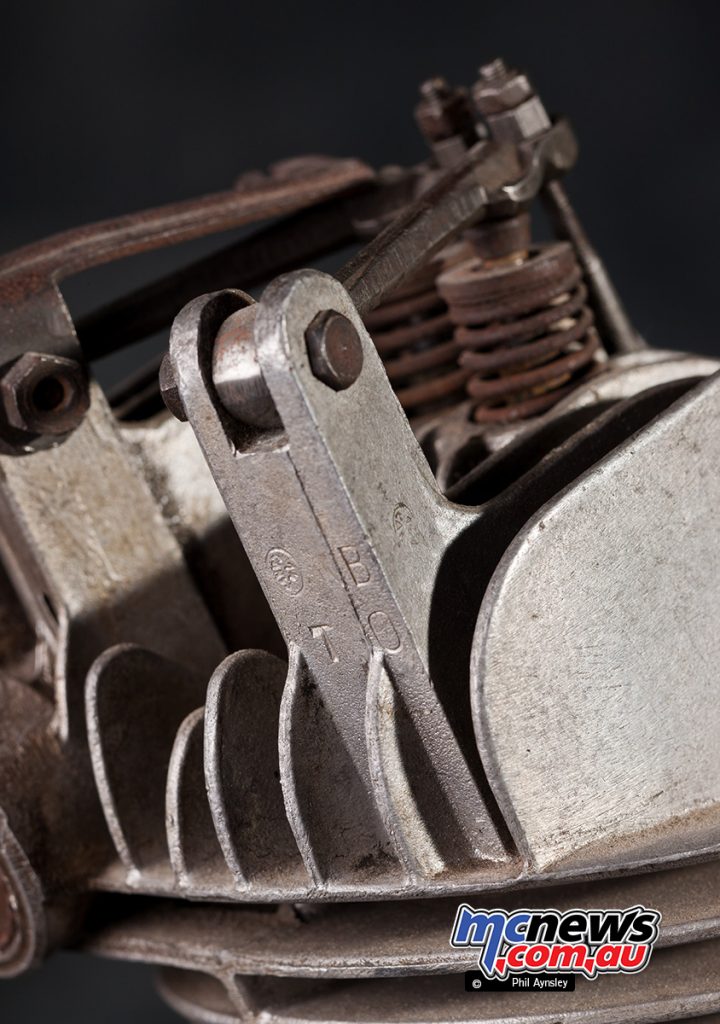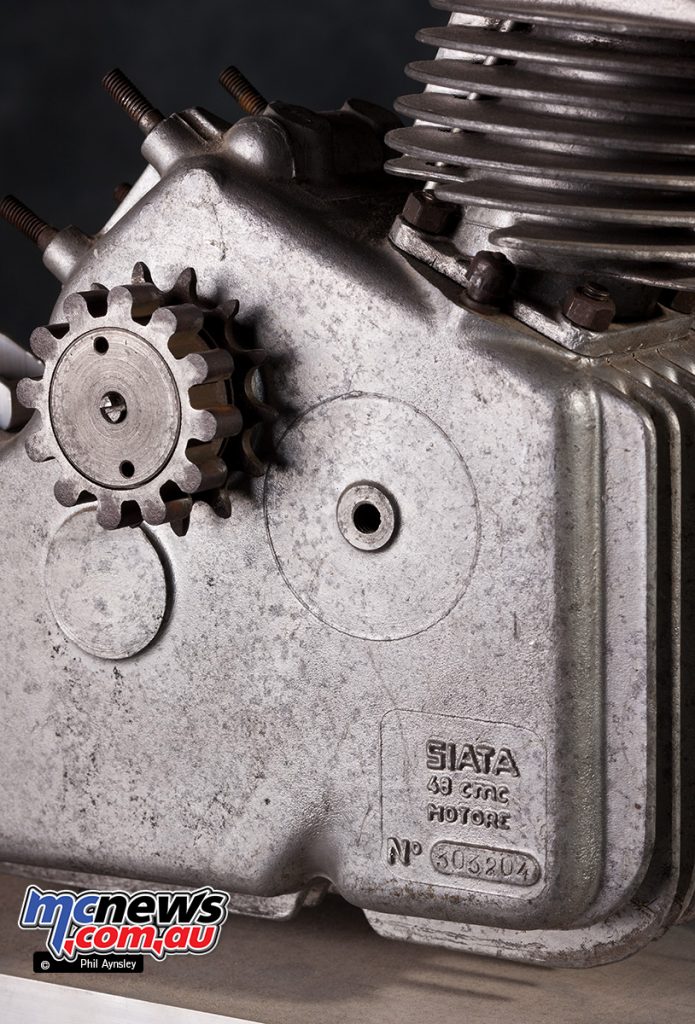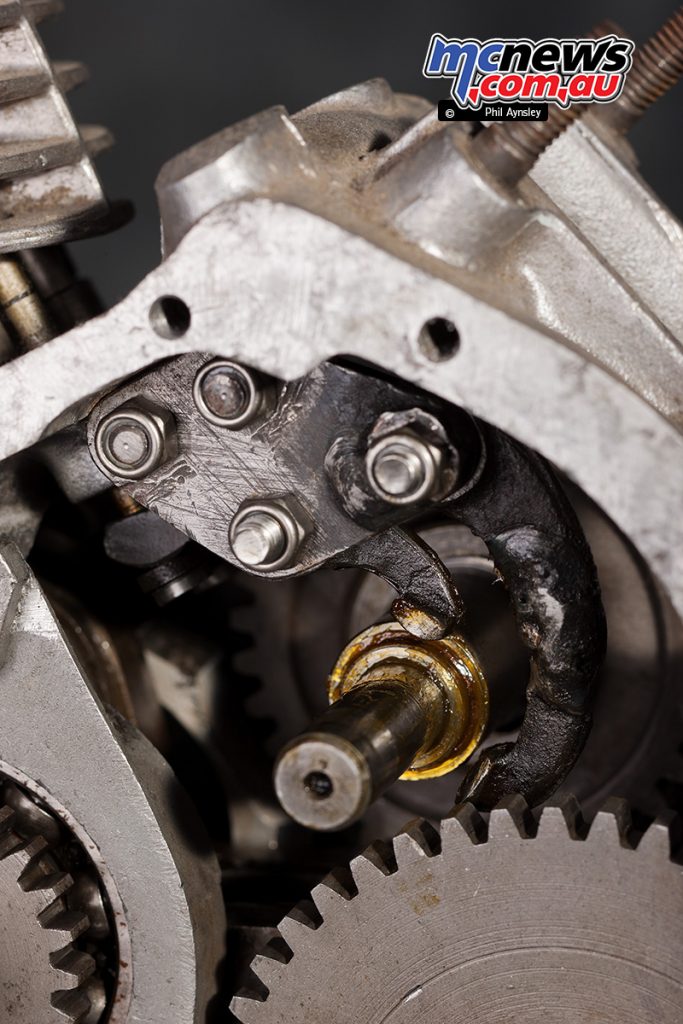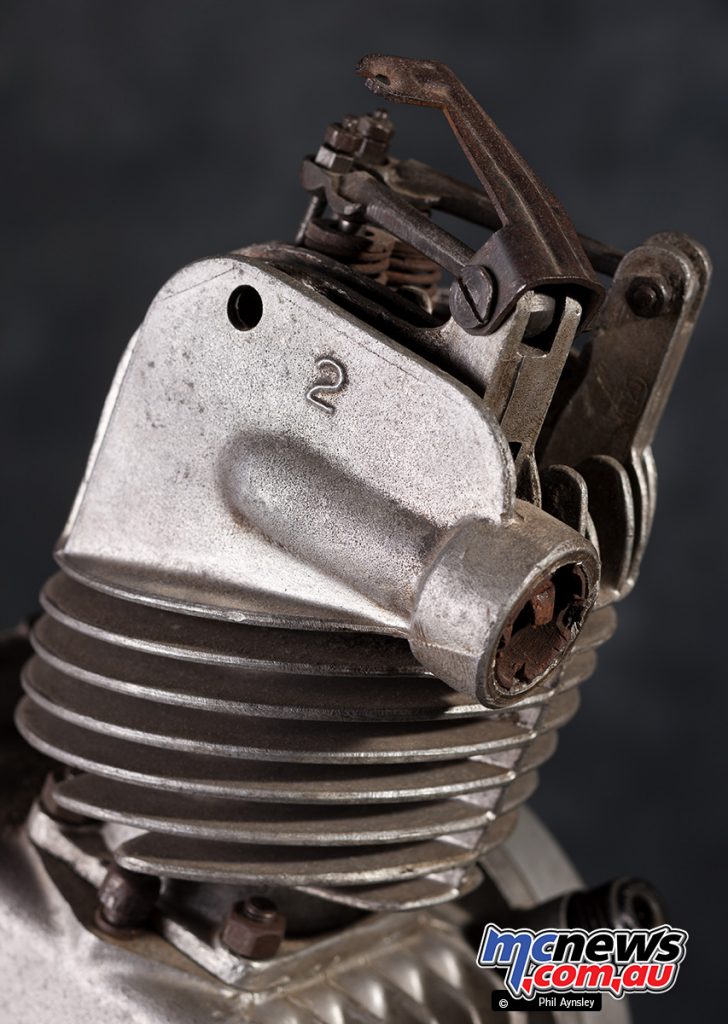Iconic Italian history – the Ducati Cucciolo with Phil Aynsley
In a recent column I discussed Ducati’s first complete motorcycle, the 60 Sport. I glossed over the development of the motor that powered it however, so here is part one of the history of the most important engine in Ducati’s 90 years – the Cucciolo.
As previously mentioned the Cucciolo (Little Pup) was designed by the Turin based lawyer and writer Aldo Farinelli in 1943 after the Italian Armistice. He had foreseen the need for a cheap and economical means of transport in post war Italy and had a prototype working by 1944. In 1945 SIATA (known for its development of racing car engines) started production of the Cucciolo.
The Cucciolo was one of the first of a vast number of “clip-on” motors that were designed by many companies to be attached to bicycle frames thus providing basic powered transport to the post-war populace. However it was distinguished from all the other clip-on motors by being a four-stroke, not a two-stroke. As a result of its greater torque, two-speed gearbox and impressive fuel economy and reliability it proved to be the most popular of this class of engine. In fact by the time its last variant – the 65 – was discontinued in 1958, over 400,000 had been produced!
The very first version was simply known as the Cucciolo, with production by SIATA, starting in late 1945. These early motors are distinguished by their barrel finning being at a pronounced angle and with the barrel being cast in the one piece with the engine crankcase. Both intake and exhaust faced to the rear. The other standout feature was the use of pull-rods rather than push-rods to control the exposed overhead valves. Splash lubrication was used. Unfortunately to date I have not been able to photograph one of these very early motors!
The Cucciolo T1
In June 1946 when Ducati also began production, several modifications were made to the design, with both companies calling it the T1. The most notable change from the original was that the barrel finning was changed to be horizontal. Power was 1.25hp and max rpm reached at 5,200. Engine weight was 7.8kg, with a top speed of 40km/h. Fuel consumption was just 1.02L/100km. This unrestored, early T1 has engine number 9816.
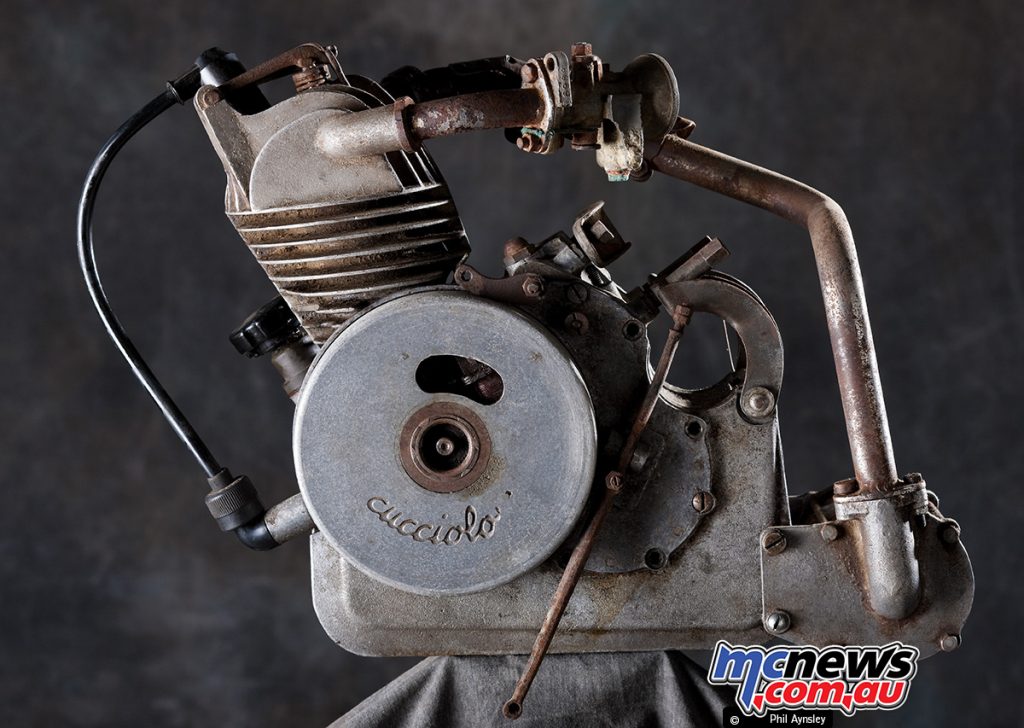
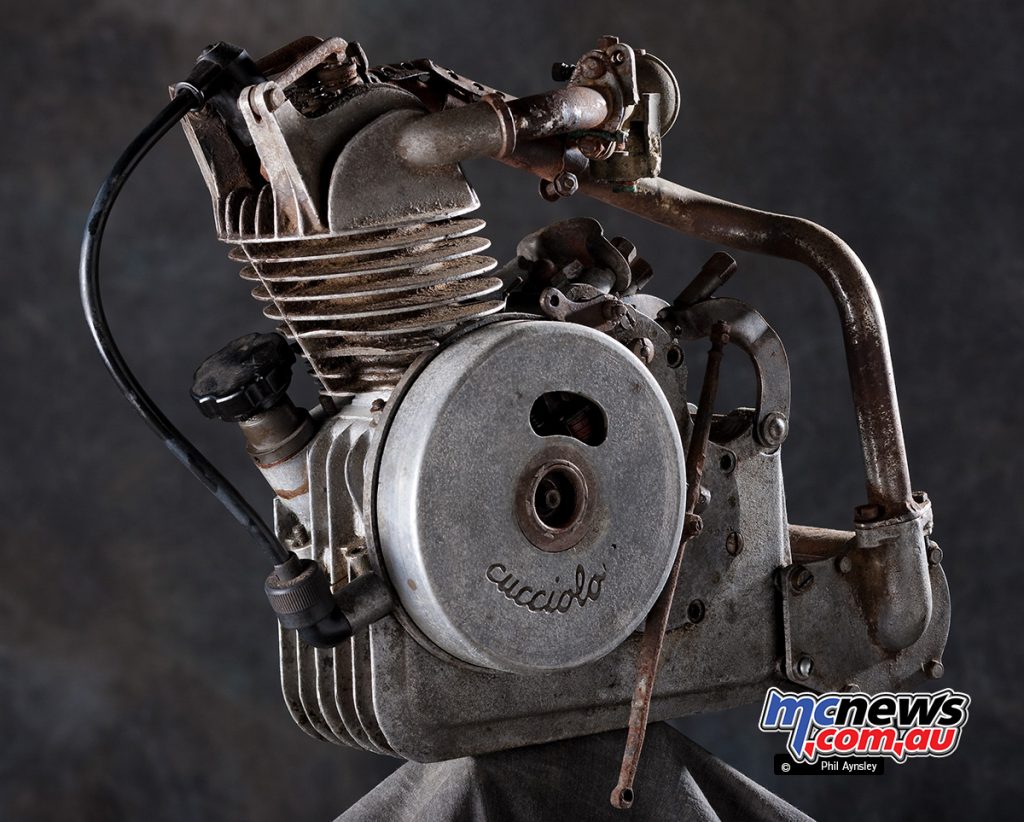
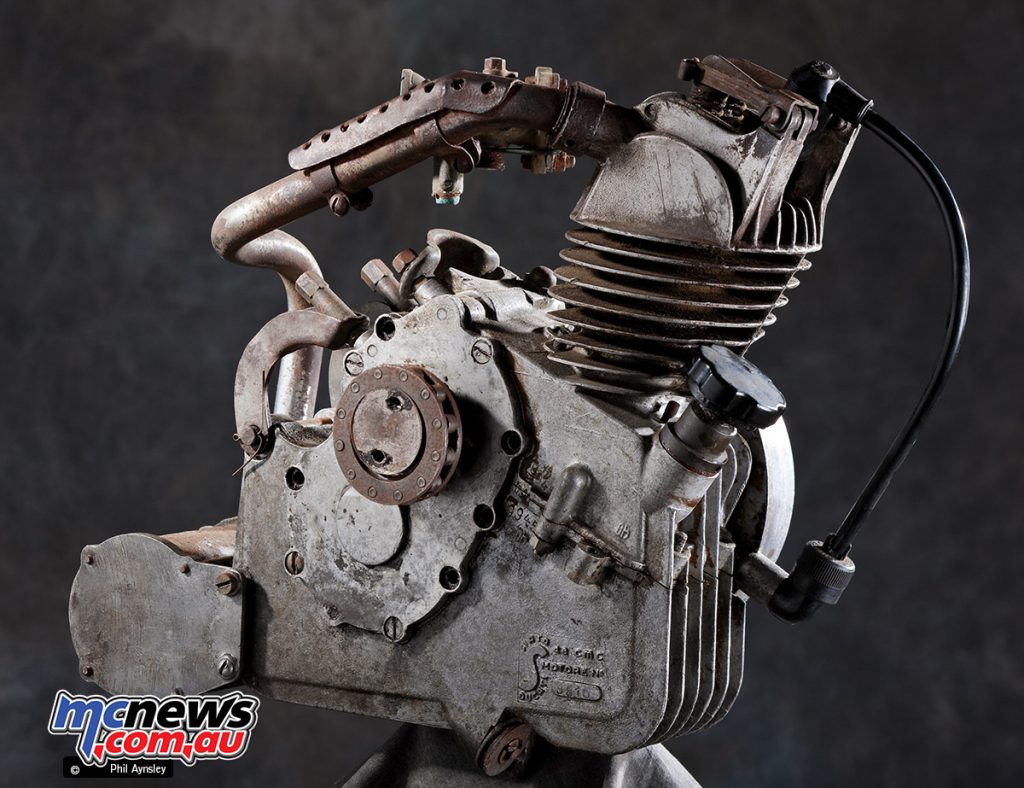
Here is a slightly later (Eng No. 27359) motor fitted to a bicycle.
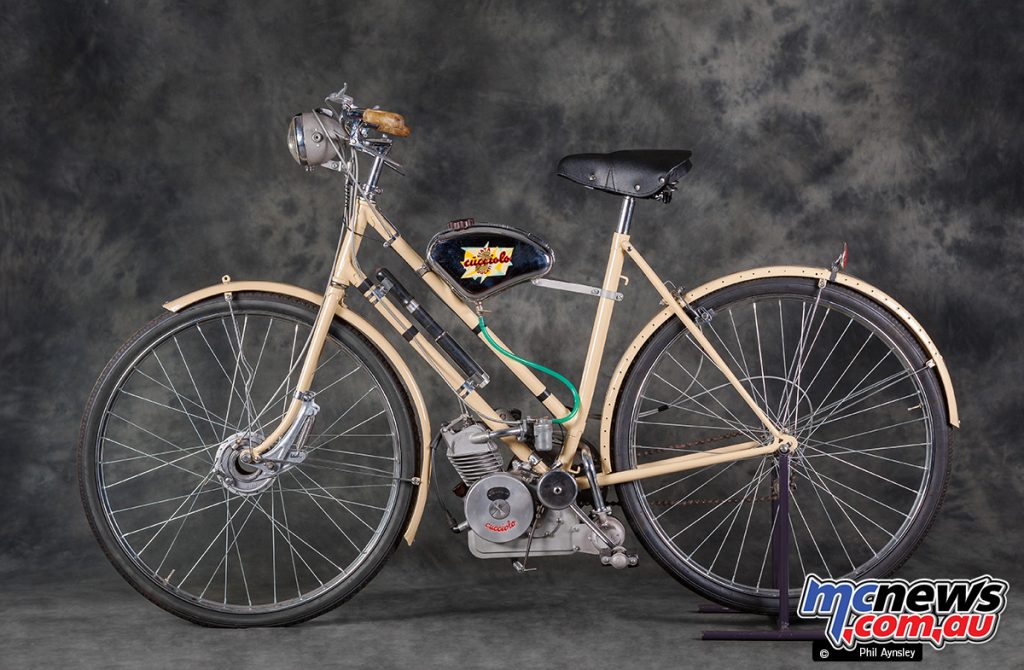
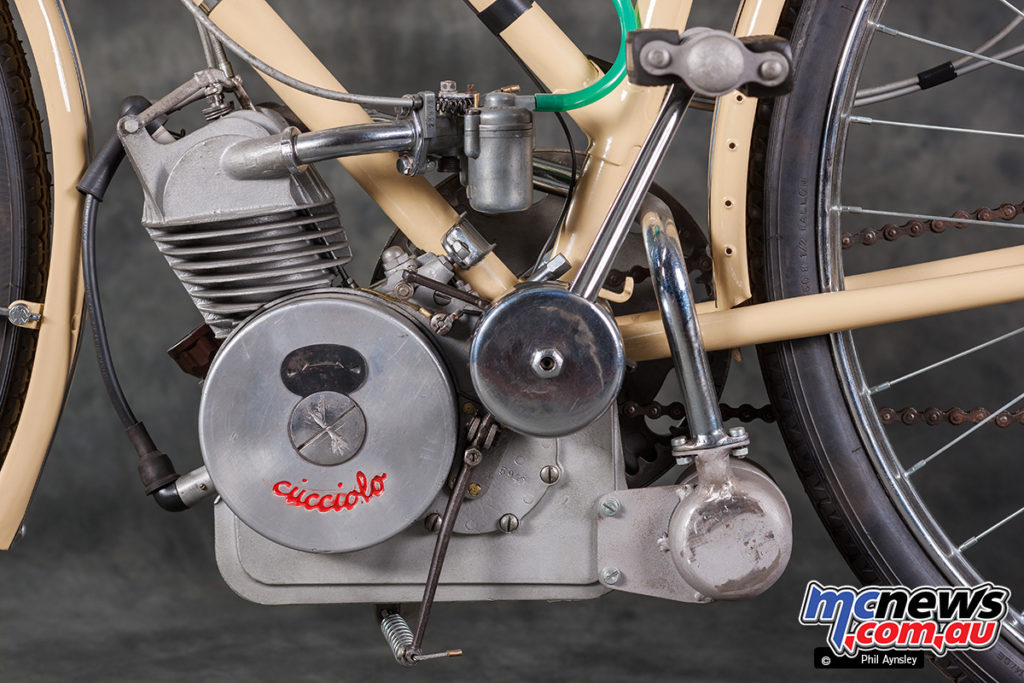
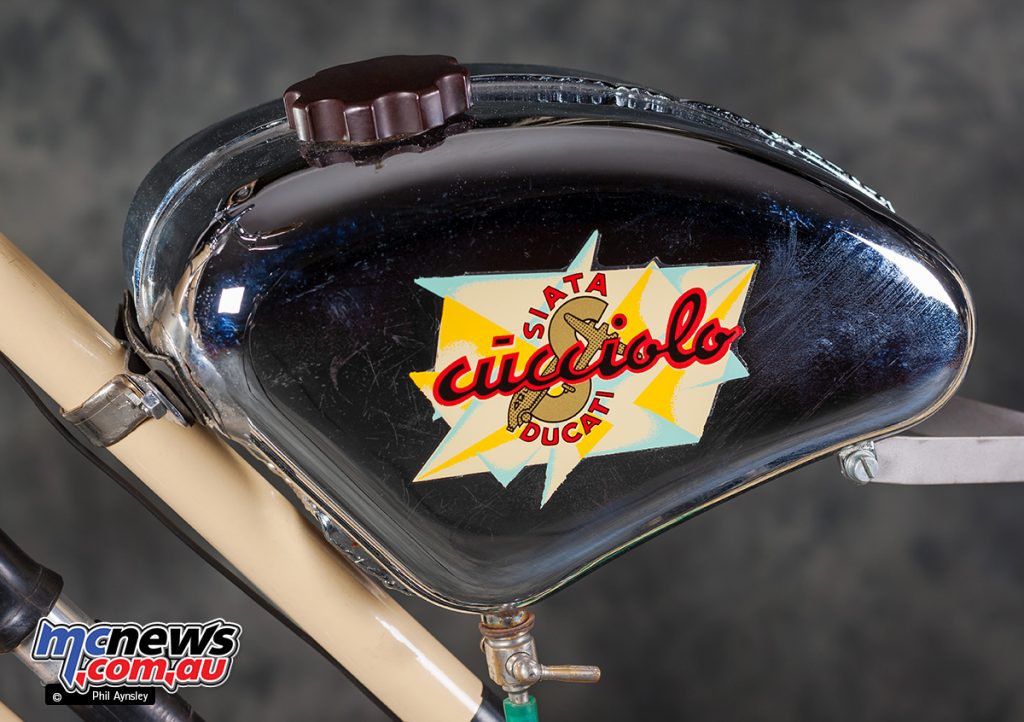
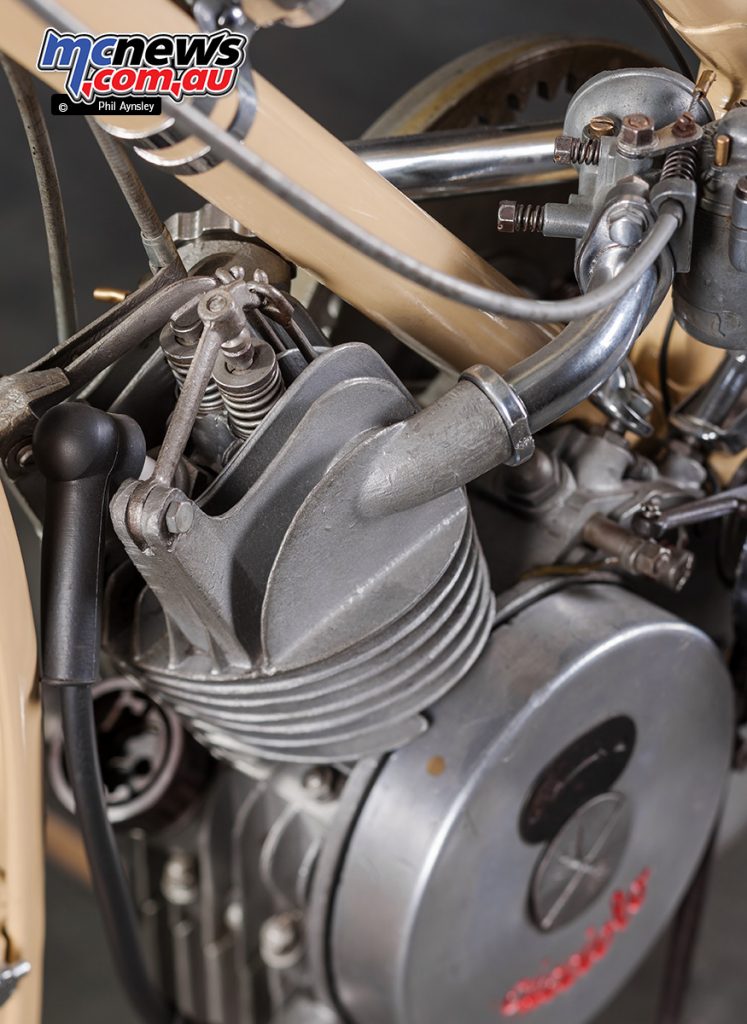
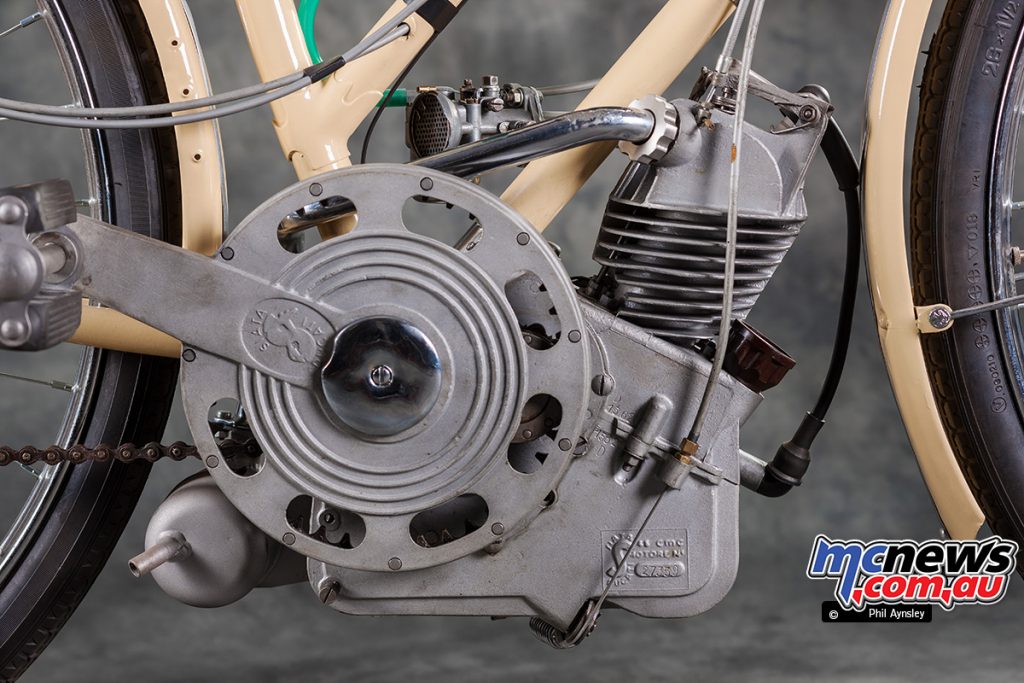
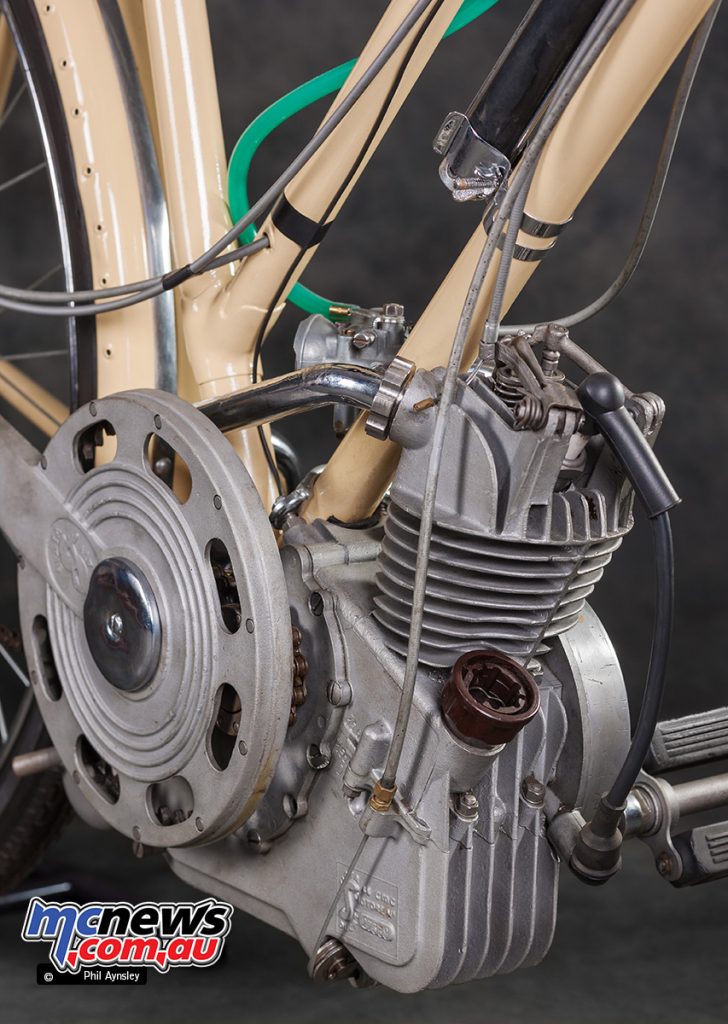
The Cucciolo T2
Both SIATA and Ducati produced the next version of the Cucciolo, the T2. This saw the first major changes to the design (carried out by Ducati chief engineer Giovanni Fiorio). The barrel was now removable, being bolted to new crankcases by four studs. Both the spark-plug’s size (12 to 14mm) and position were changed. The T1’s large, forward-facing oil filler was changed to a much smaller filler on the left hand side.
The T2 was also available in a Sport version (the first in a long line…) that had a larger diameter bore, giving a full 50cc plus higher compression and increased ignition advance. Benzole was required to be added to the normal petrol. When fitted to a racing bicycle the 2hp enabled a top speed of around 65kph.
This T2 has never been run and is complete with its packing crate, accessories and all paperwork. Eng No. 216447. The paperwork for the Weber MF14 carburettor is dated 3/3/49.
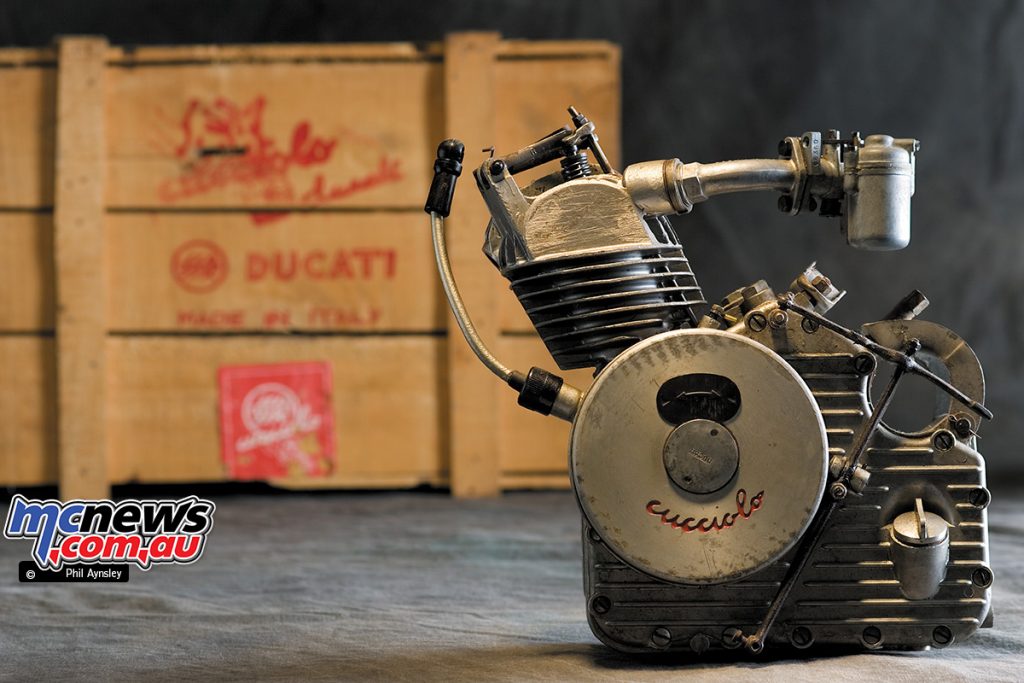
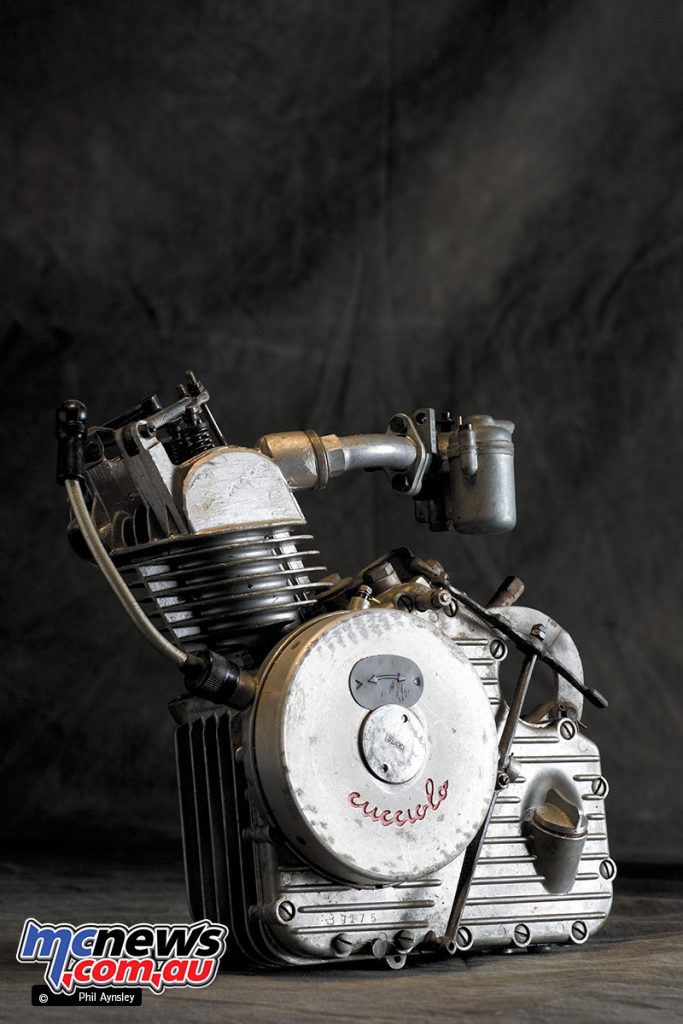
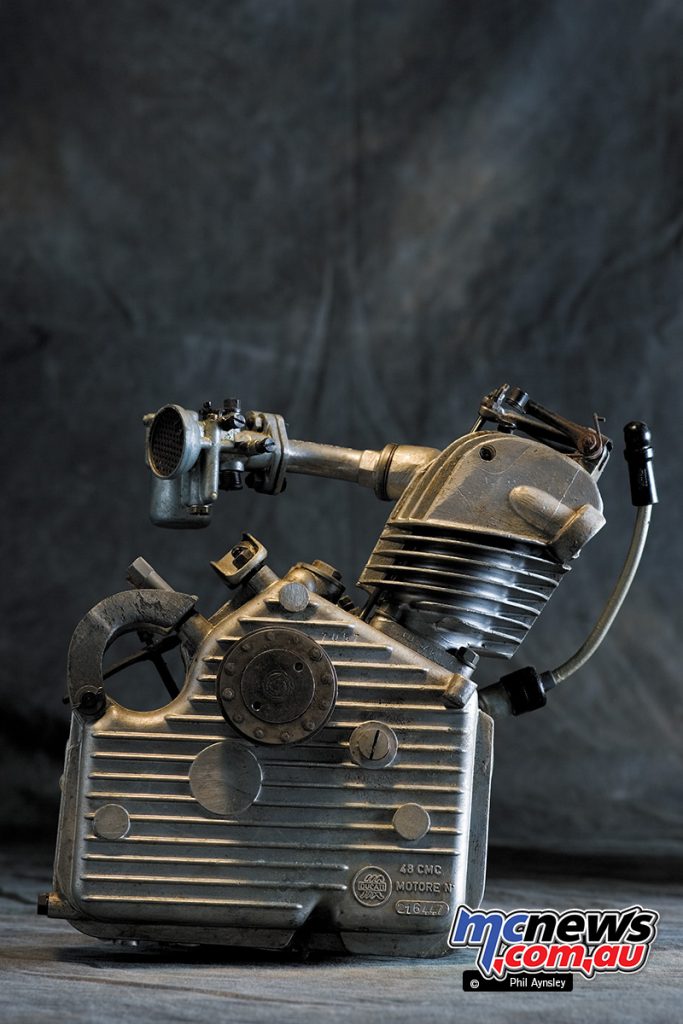
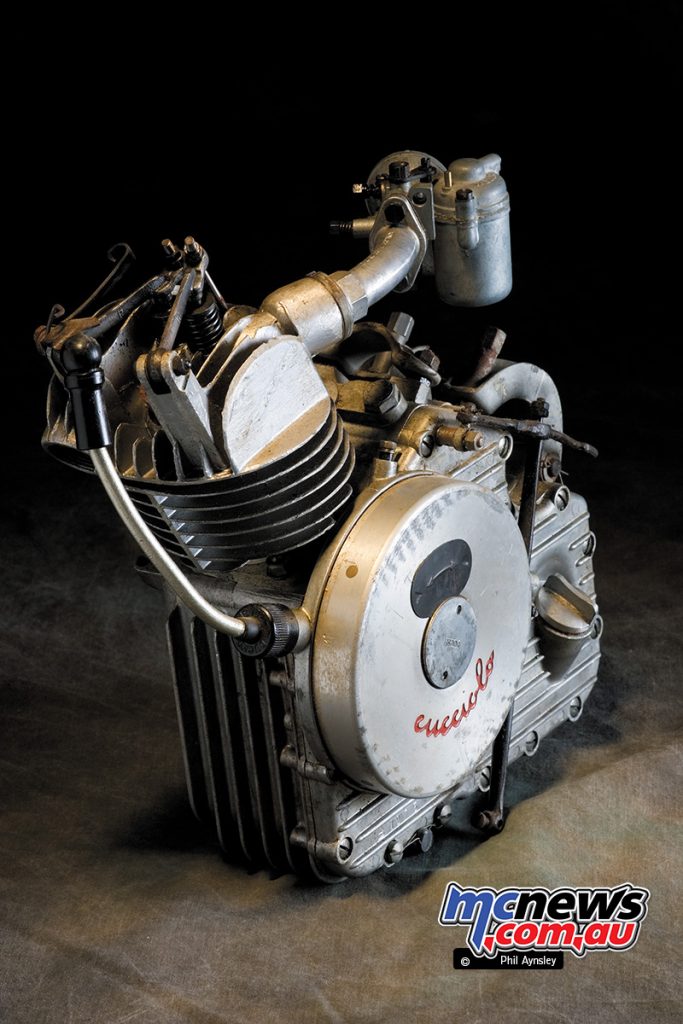
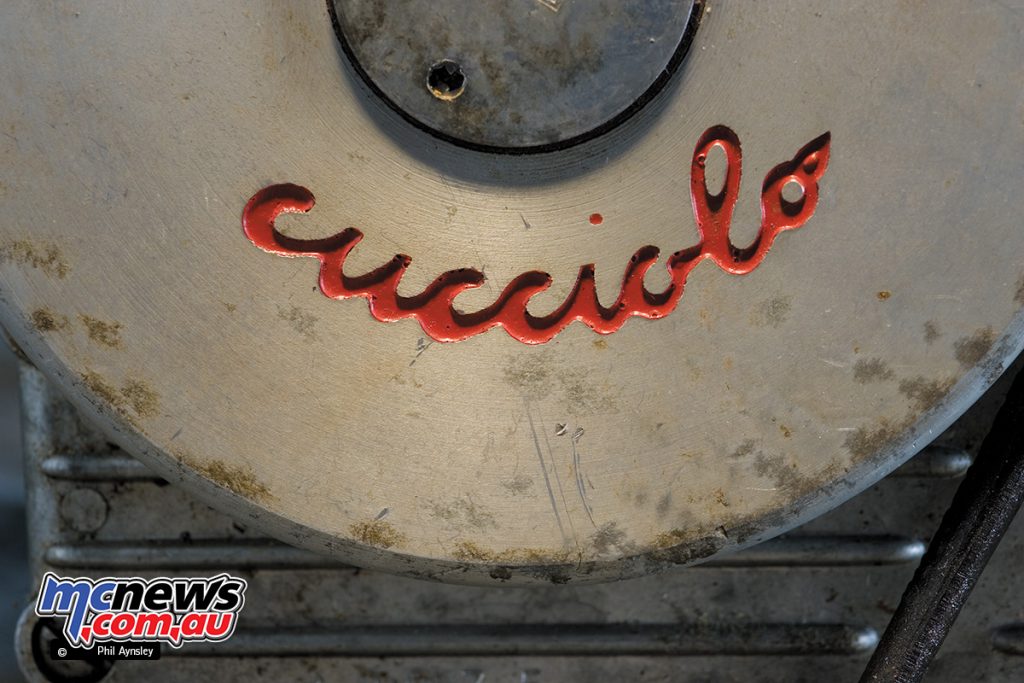
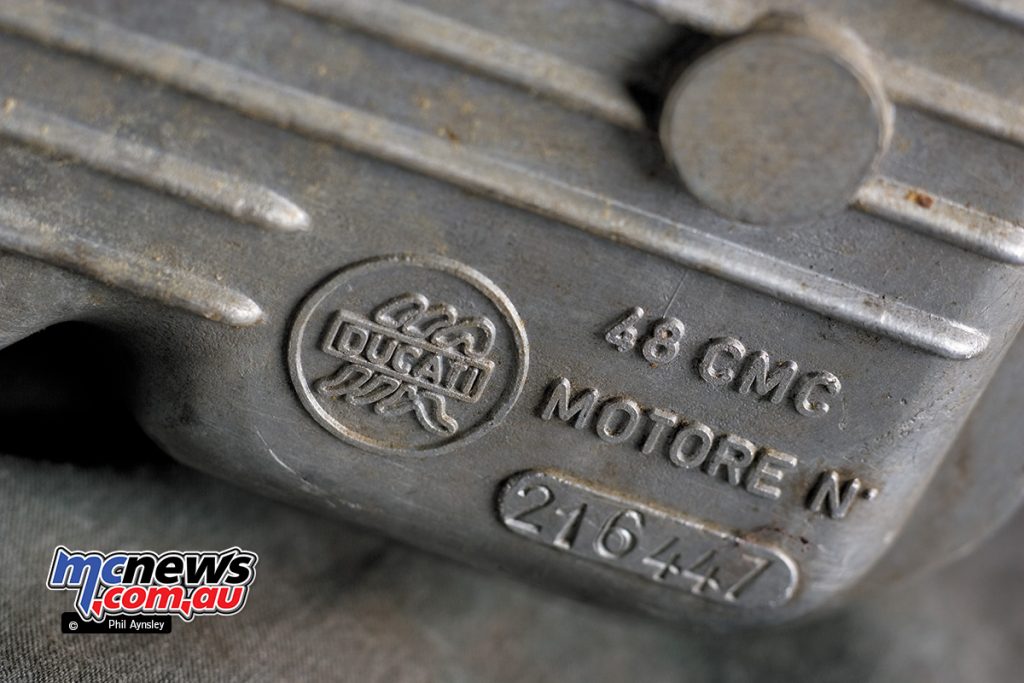
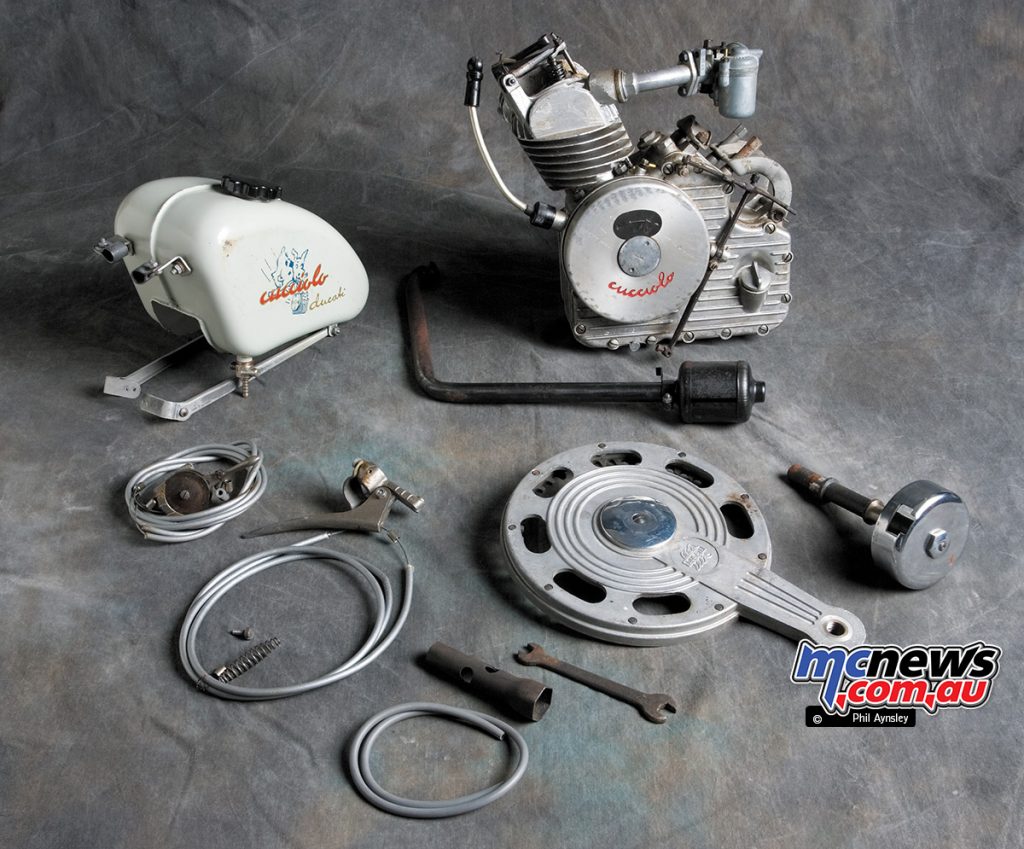
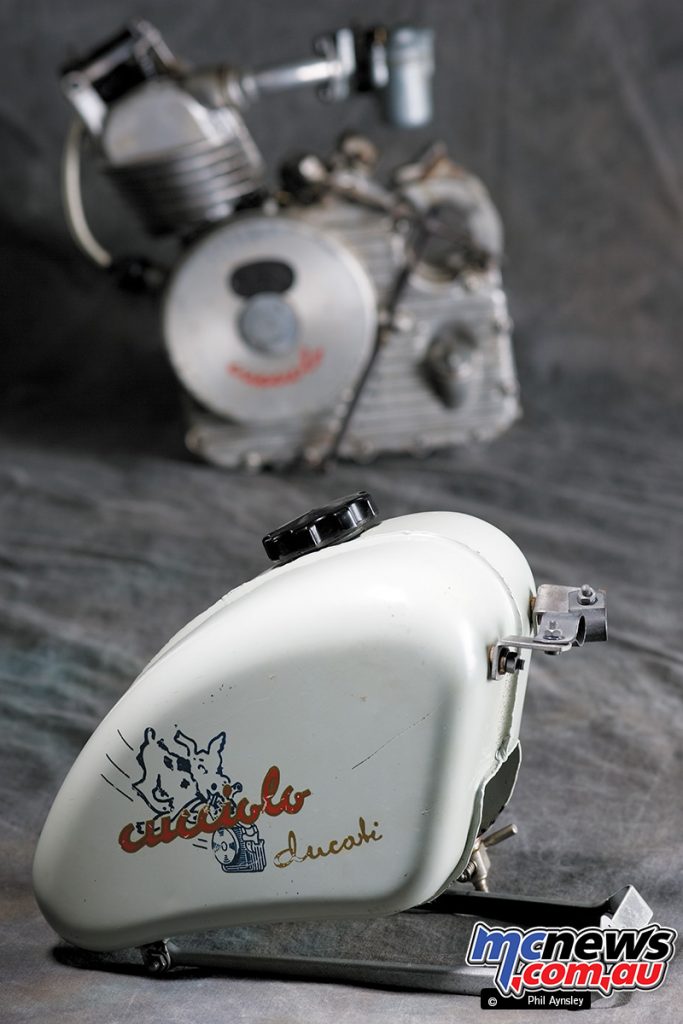
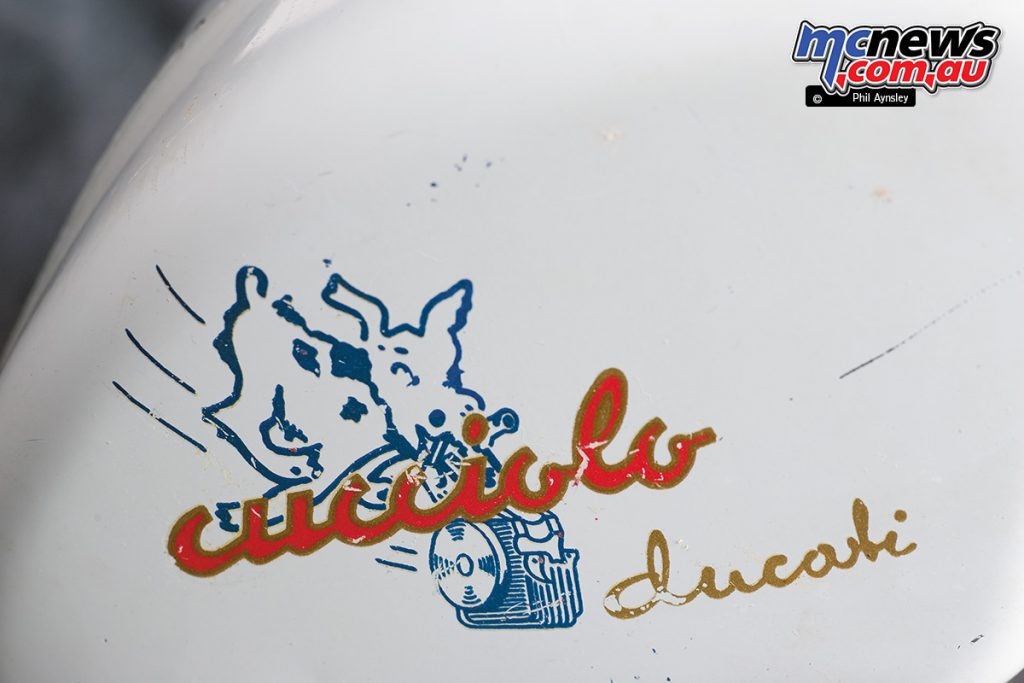
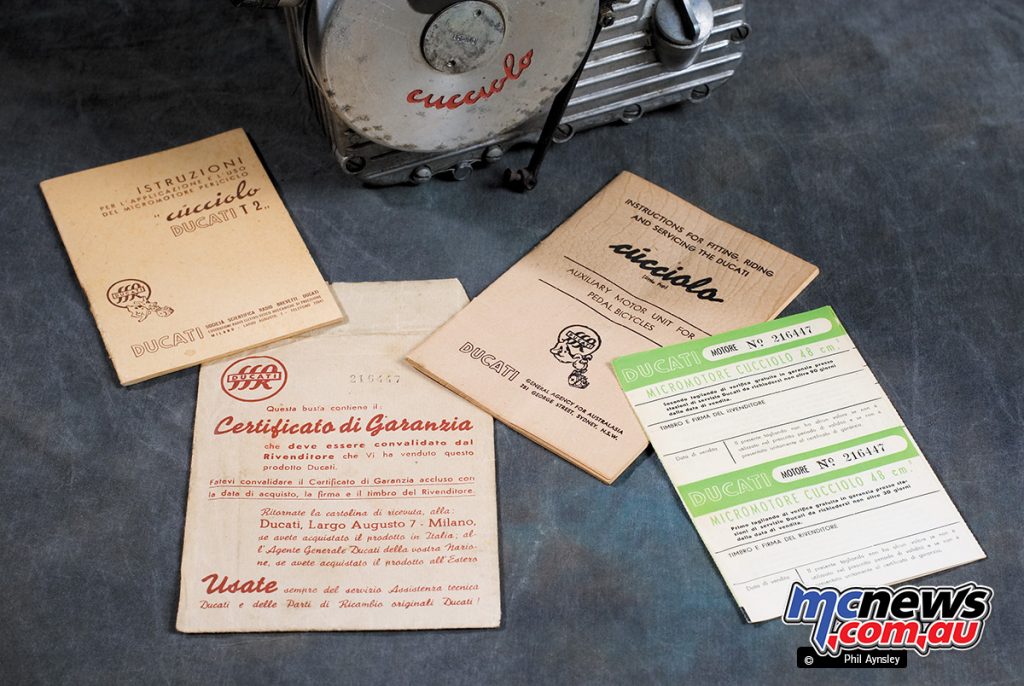
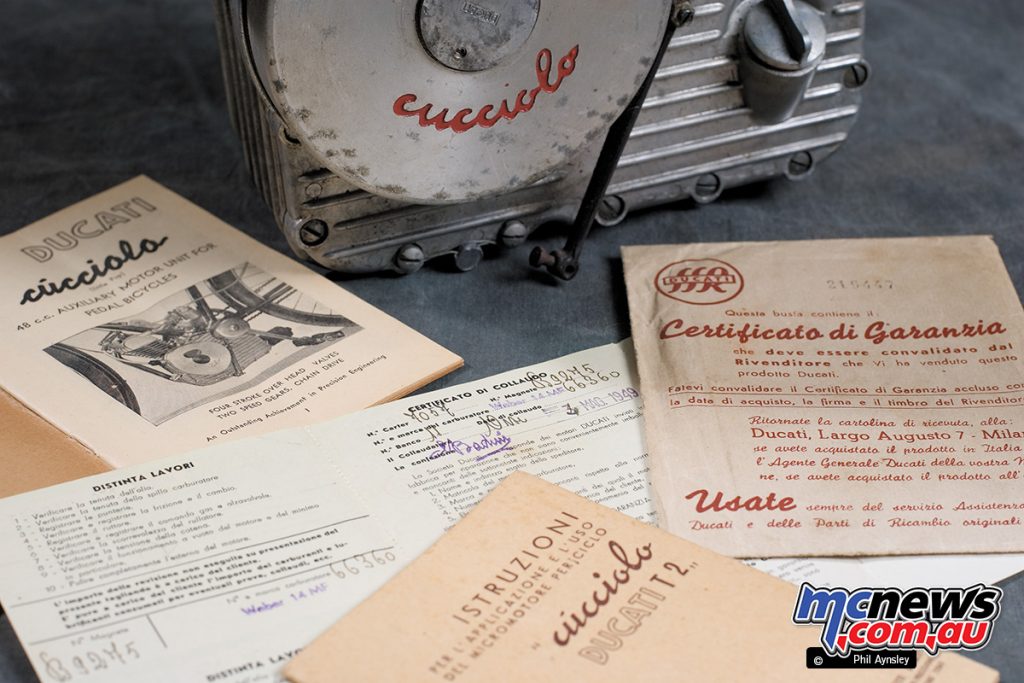
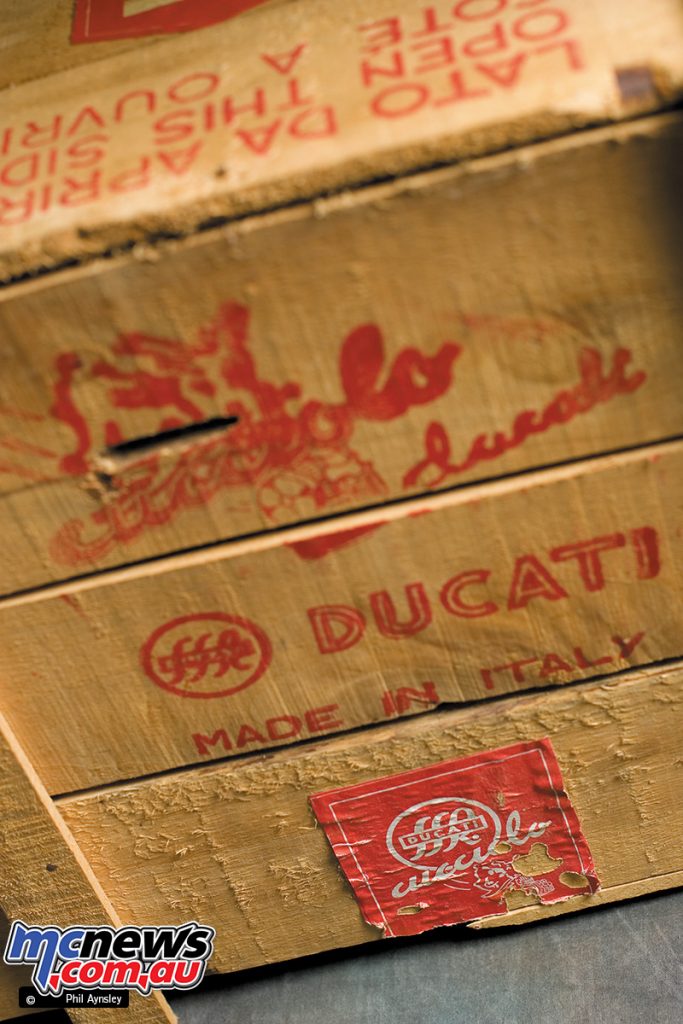
The Cucciolo T0
The T0 was a cheaper version of the T1, with no clutch or gearbox. The ‘fixed speed’ engine had only one lobe on the camshaft (which also acts as the primary gear) with one normal rocker arm and one ‘special arm’. The sidecase shows the blank where the clutch arm mounting point is fitted on the T1. It was built by SIATA but sold by Ducati, and only for 1949.
